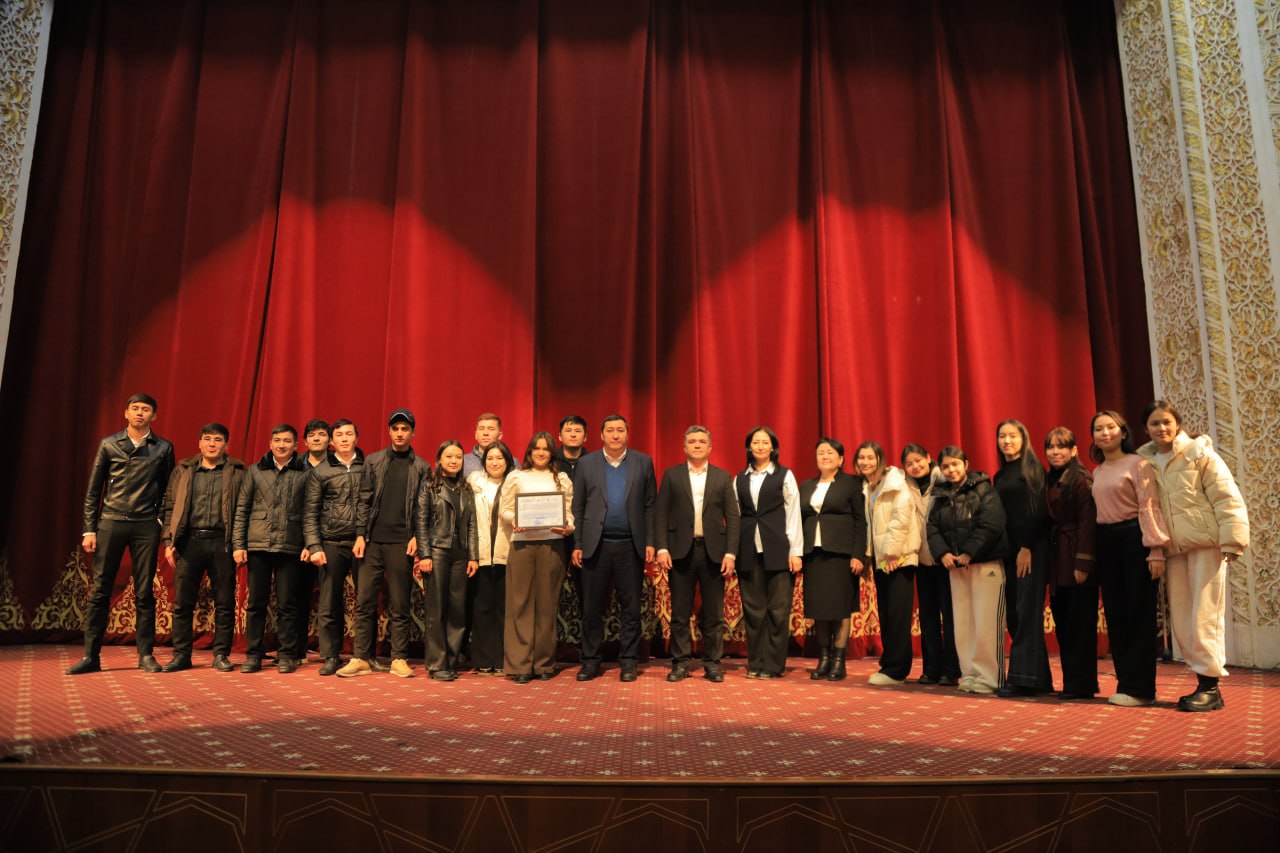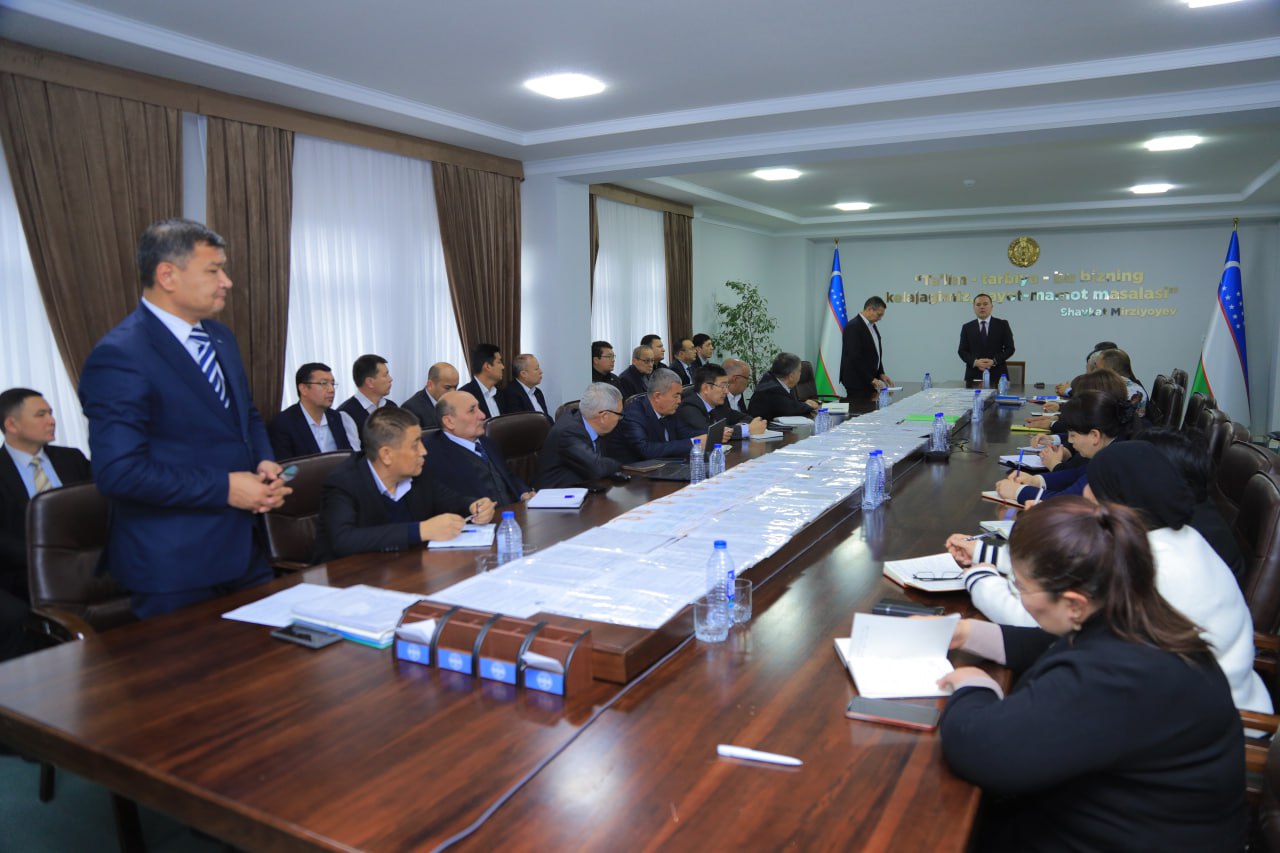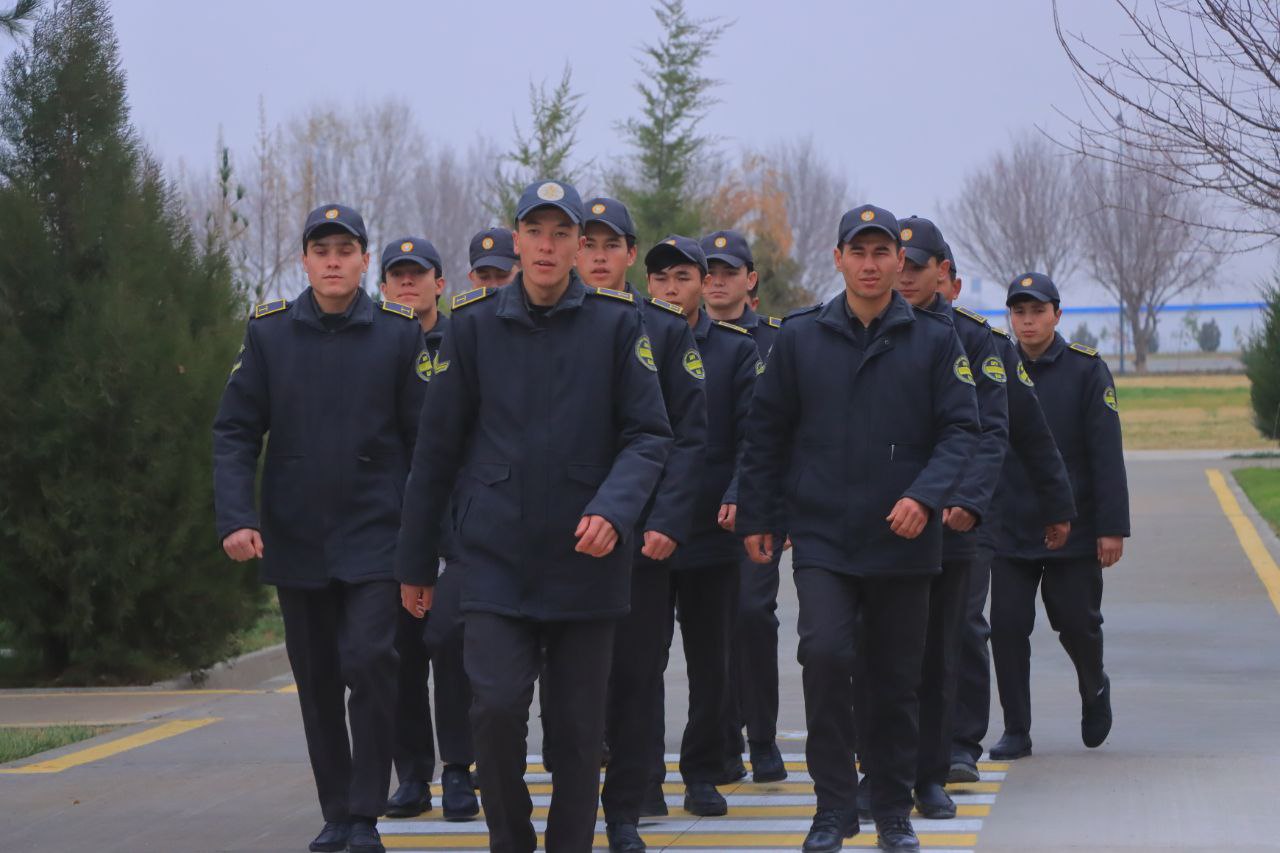Kholova Shakhnoza Mardonovna – teacher, Jizzakh State Pedagogical University named after Abdulla Kadiri, Department of Preschool Education Methodology
Abstract
The article is devoted to ways to further improve the physical education of female students, in which the attitude of female students to physical exercises and favorite types of sports is studied, and it is shown that physical education is a social need of female students. Also, the issues of the role of physical education in the healthy lifestyle and physical culture of female students were analyzed from the point of view of various pedagogical and psychological conditions, and they were emphasized as a means of forming the physical culture of a whole person.
Key words: female students, pedagogy, physical education, physical activity, physical training, physical culture, sport.
Today, the conditions created for raising the students of the higher educational institutions of our republic to be physically fit are increasing more than ever. The issues of physical education of female students are part of the general issues of the theory and methodology of physical culture and it has its own characteristics. At this point, it is important to pay attention to the meaning of the concepts “Physical education”, “Physical culture”, because until now there is a situation where physical education is separated from the science of pedagogy among experts. Physical education is a specialized and important component of the science of pedagogy and has the following definition: “Physical education is a pedagogical process, it is a set of activities aimed at developing the morphological (body structure) and functional (work of internal vital systems) abilities of growing young organisms with the help of physical exercises.” Therefore, physical education as an important vital component of the science of pedagogy should be carried out in close connection with other types of education.” is the general result of the success achieved by the society in the work of use”. Physical culture is the next important stage of physical education, and it is an important cultural, educational, medical-biological and socio-political process that lasts throughout life. Because in the formation of physical culture, together with genetic and natural climatic conditions, the role of social conditions created to increase physical culture is incomparable. The higher the standard of living of the population, the higher the level of their physical culture, and the average longevity increases. Student years are the last mandatory stage of physical education and physical culture improvement. Then you have to deal with them independently and voluntarily. Almost half of the more than two hundred thousand students studying in higher educational institutions of our republic are female students. Despite the fact that many measures are taken to increase the physical education of female students, the number of female students who are physically active is very small, and their level of physical exercise is not satisfactory. According to the schedule, students go to training in sports clothes, their activity in training is very low. According to data, 8% to 20% of all students are involved in club activities (A.H. Gulomov, E. Tikhonova, G.F. Gulyamova et al., 2004).
As a percentage of the total number of students involved in clubs, the number of female students is even lower, it is 7-8%. There are several objective and subjective reasons for this. For example, the existence of old-fashioned views on the physical culture of female students, the lack of attention of the school administration and the view of physical education as a secondary subject, the lack of professional training of teachers and the inability to protect the position of their subject at the necessary level, the lack of organization of training at a modern level, conditions low quality, insufficient number of social students, lack of initiative or lack of support for it, lack of clubs suitable for the interests of female students, as well as distance of female students from physical culture education, lack of modernity in accordance with the national mentality, lack of personal physical development plan, etc. The main reason for this is the lack of study hours allocated to the science of physical culture and their non-continuation in the III-IV stages. Physical education of female students today is related to the important pedagogical, psychological and physical culture science, as well as modern scientific and methodical research based on many factors and evaluations. requires, and these show that the problem is more urgent.
The pedagogical and psychological significance of personal interest and interest in directing a person to a certain type of activity and its implementation has an important guiding force. It is embedded in the content of the principle of awareness and activity of organizing and conducting physical culture and sports activities, and requires the implementation of certain organizational and pedagogical measures. First of all, this requires studying the interest and aspirations of female students in physical culture and sports activities. For this purpose, the following questions were addressed to 98 I-II stage students studying foreign philology: 1. How old are you? 2. Where do you live? Rent, bedroom, private apartment. 3. Do you follow the agenda? Yes. No. 4. Do you exercise in the morning? Yes. No. 5. Are you satisfied with physical education classes at school? Yes. No. 6. Are you satisfied with physical education classes at the university? Yes. No. 7. How much time do you allocate for a day of physical culture training? 15,20,30,40,50,60,70,80,90 minutes. 8. Your favorite exercises: Volleyball, handball, basketball, running exercises, wrestling gymnastics, etc. 9. How do you spend your free time? 10. Do you have other suggestions for this?
The following was revealed from the answers of female students to the given questions: the average age of female students of the I-II stage was 19.1 years, the youngest was 17 years old, and the oldest was 25 years old. 10 of them are 17 years old; 18-year-olds-22; 19-year-olds – 32; 20-year-olds-22; 21-year-olds-8; 22, 23, 24, 25-year-olds consisted of 1. If we take into account that the students of the I-II level will graduate from general secondary special educational institutions and enter their studies, the period of their study in higher educational institutions should be 19-20 years old according to their age and stage. It is known from the answers that 32 students entered their studies ahead of time and the remaining 66 students entered late. Therefore, most of them achieved their goals related to higher education, even though it was late, worked hard to get into school, and strengthened their will. The place of residence of female students is important for their academic work and sports and health activities. 13 of the respondents are on rent, 21 of them are students. in their residences and 64 of them studied in their private apartments. Therefore, the conditions of the city are good for language learning and education in the field of foreign philology. He said that 82 students follow the agenda and 16 students do not. 63 students were engaged in physical education in the morning, 32 students said that they do not engage in physical education, and 3 students said that they do it sometimes. 68 students were satisfied with physical education classes at school, while 30 female students were not satisfied with physical education classes at school. 96 students were satisfied with the physical culture classes at the institute, while 2 female students were not satisfied with the physical culture classes at the institute.
27 students spent 15 minutes, 29 for 20 minutes, 26 for 30 minutes, 7 for 40 minutes, 4 for 50 minutes, 2 for 60 minutes, 2 for 70 minutes, and 3 for 90 minutes.
The time spent by male and female students for physical exercises in a day
| 15 minute | 20 minute | 30 minute | 40 minute | 50 minute | 60 minute | 70 minute | 90 minute |
|
27 person |
29 person |
26 person |
7 person |
4 person |
2 person |
2 person |
3 person |
Спорт машқи (тренировка) ни меъёр бўйича белгиланган вақтини 1,5 соат (90 минут) лигини эътиборга оладиган бўлсак 98 талабадан фақат 3 тасигина мунтазам спорт билан шуғулланишини билишимиз мумкин. Қолган 15 талаба жисмоний маданият билан мустақил шуғулланиши (40,50,60,70 минут), 82 талаба (15,20,30минут) эса фақат эрталабки бадантарбия билан шуғулланади деб ҳисоблашимиз мумкин.
Талаба-қизларнинг севимли спорт турлари
| Gymnastics | Volleyball | Basketball | Running exercises | Handball | Tennis | Swimming | Football | Chess | Karate | Kickboxing |
| 28 | 24 | 23 | 23 | 13 | 4 | 4 | 3 | 2 | 2 | 1 |
- Of those asked, 28 did gymnastics, 24 did volleyball, 23 did basketball, 23 did jogging, 13 did handball, 4 did tennis and 4 did swimming, 3 did soccer, 2 did chess, and 2 did karate and 1 did kickboxing. as favorite sports. Although 28 students chose gymnastics as their favorite sport, most of the universities do not have conditions for conducting gymnastics classes. “What do you do in your free time?” the following answers were given to the question: 37 read books, 16 listen to music, 13 do housework, 12 study, 8 dance, 8 say they don’t have free time, 5 do sports, 5 watch TV . 1 of the students said that they are engaged in sports, 2 play basketball, 2 are engaged in sewing, 1 student is engaged in walking, playing tennis, pressing for the abdomen, playing handball, working, doing fat exercises, participating in shaping. “What do you do in your spare time?” If we include physical education and sports, as well as dancing, and make a general conclusion, we can understand that 33 students out of 100 are physically active in their free time. but its level cannot meet today’s requirements. This leads to the conclusion that one out of every three students does not do physical education and sports, even if they have the opportunity. Therefore, we can assess the situation as satisfactory only if we raise the indicators to 66-70, which means low. These indicators are not the only factors affecting the low level of physical culture of female students. A number of other factors also affect the low physical culture of female students and, as a result, their physical culture is not formed at the required level. Examples of them include:
- poor health;
- lack of attention to the physical education of schoolchildren in the family and at school;
- low quality of lessons and extracurricular activities; family traditions;
- lack of sports clothes;
- lack of independent experience; lack of time; the remoteness or absence of the training place; personal lack of interest or lack of understanding of the importance of physical culture in human health and daily life;
- lack of social requirements; non-organization of training in the sport of interest and lack of necessary sports facilities;
- inadequate promotion and promotion of physical culture and sports-health improvement;
- lack of willpower and inability to properly plan personal life;
- lack of important life aspirations, plans;
- lack of educational and training information necessary for employment;
- just lack of interest and other negative factors, etc.
The above factors are specific, and they have a negative impact on the physical education of female students and, through it, on the physical culture of female students. To eliminate these factors and to develop the optimal ways and options for improving the physical education of female students, to determine the specific motives for the strict and complete formation of physical culture of female students, to standardize the content, tools and forms of physical culture of female students on an experimental and scientific-theoretical basis. requires development of criteria and implementation. The students themselves will answer the question of what to pay attention to and what to do. The last question given to the students was written as “Do you have any other thoughts on this?”. Summarizing the answers to the question, we can come to the following main conclusions. 1. Increasing the number of lessons and holding them twice a week. 2. To better teach the technique of sports games. 3. To make the lessons interesting. 4. To conduct more educational competitions with girls during the lessons. 5. Organization of rhythmic gymnastics clubs. 6. To train students in separate halls and to continue them in 3-4 stages. 7. Having special gyms and increasing the number of high-class trainers. 8. Giving more attention to sports and opening dance clubs. 9. If there are more gyms, swimming pools, more shows on TV. 10. If more circles are organized and their price is not expensive, etc. Therefore, if the activities proposed by female students are implemented in higher education institutions, the level of physical education and healthy lifestyle of female students will be improved. This gives an opportunity to save costs from a simple medical diagnosis of 15-20 thousand soums to 350-400 thousand soums for complex electronic diagnoses, and the saved funds create an opportunity to increase intellectual potential or go on trips to see the colorful world. Of course, we can say with confidence that in no other country are the conditions created to educate young people growing up mature in all aspects. But are we able to use these opportunities to the required extent, are we able to test our capabilities in sports, art, knowledge? Of course not, this is shown by the conclusions that are known from the above answers.
Physical exercises, as well as other science-based sports and health activities, have a positive effect on the formation of physical culture of female students, they lead female students to carry out planned work on their physical education, to change their body and its functions. Also, first of all, physical culture training increases the physical education of female students and adapts their body to active physical exercise. Thirdly, physical education leads to the active formation of female students’ knowledge and skills about physical culture and its content, tools and forms, and further develops the education and training of female students in physical culture.
Literature
- Ғуломов А.Ҳ., Е.Тихонова, Г.Ф. Гулямова Талаба-қизларни спортга жалб қилиш масалалари, конф. материаллари,Самарқанд. 2004.
- Раҳимжонова К.Т., Таранова А.В. Ҳаракат- жон озиғи .-Тошкет: Медицина, 1986, 48 б.
- Бальсевич В.К. Физическая культура для всех и для каждого.-Москва: ФиС, 1988.-208 с.ил.
- 4. Полиевский С.А. Физичесое воспитание учашиеся молодежи (гигиенические аспекти).-Москва: Медицина, 1989.-с.
- 5. Uzoqov I., Xolova Sh. M. PEDAGOGIK IMIDJ VA KOMPONENTLIK //INTEGRATION OF SCIENCE, EDUCATION AND PRACTICE. SCIENTIFIC-METHODICAL JOURNAL. – 2022. – T. 3. – №. 6. – S. 242-248.
- S. Xolova – Ta’lim, Talaba qizlar jismoniy faolligini oshirish metodikasi fan va innovatsiya, 2022.
- Xayitov T. JISMONIY MADANIYaTNI ShAKLLANTIRISh: Maqolada jismoniy madaniyatni shakllantirish mazmuni, vositalari va shakllari to‘g‘risida ma’lumotlar keltirilgan va ular jismoniy madaniyatni shakllantirishda katta ahamiyatga ega //Fizicheskoe vospitanie, sport i zdorove. – 2022. – T. 1. – №. 1.





